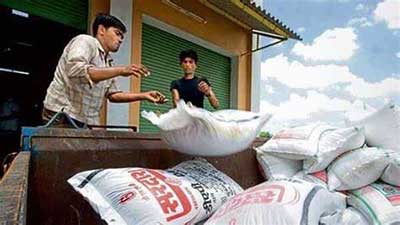Date: 20/01/2023
Relevance: GS-3: Major crops-cropping patterns in various parts of the country, different types of irrigation and irrigation systems storage, transport and marketing of agricultural produce and issues and related constraints.
Key Phrases: Niti Aayog, chemical fertilizers, Traditional Crops, One Nation One Fertilizers’, new policy address, UN report.
Context:
- A task force to examine production and promotion of bio-fertilizer and organic fertilizers has been set up under the Niti Aayog.
What will the new policy address?
- Lower duty on imported phosphoric acid to raise the competitiveness of local fertilizer manufactures, and an incentive for promoting organic fertilizers, could be proposed.
- Considering the long-term interests of agriculture and the effects of using inorganic fertilizers, saving a huge amount on account of subsidy support is a step in the right direction.
The Impact of the Current Policy
- Increased use of chemical fertilizers: Heavy subsidies have prompted many farmers to use chemical fertilizers like urea, which leads to higher productivity, but affects soil fertility in the long run.
- Excessive and inefficient use of fertilizers: It leads to nutrient losses to the environment and could also result in drinking water contamination and impact human lives as a result of unsafe storage practices, as per a UN report.
- Technology-inefficient companies are being protected: With the subsidy being released directly to companies, technology-inefficient companies are being protected.
Farmer Issues in India
- Insufficient Water Supply: Due to several reasons, farmers either don’t receive the appropriate amount of water or don’t get the supply on time; many farmers rely on rainwater for irrigation.
- Less Use of Modern Farming Equipment: In most areas, to date, farmers follow primitive cultivation methods; traditionally-used ploughs and relevant native accessories continue to be farmers’ preference.
- Over Dependence on Traditional Crops: Indian farmers have been growing rice and wheat for centuries now in several regions. The excessive production of the two grains, many times leads to the storage, sale problems and shortage of other farm products.
- Poor Storage Facilities: In rural areas, storage facilities are either insufficient or completely absent. In such a situation, farmers usually have no other option than selling their produce immediately once it’s ready, at market prices that are often very low. They are far away from a legitimate income.
- Transportation Problems: Lack of cheap, efficient means of transportation is a big problem widely seen in the Indian agriculture sector; small farmers still rely on bullock-carts for transporting their produce.
- Government Schemes are yet to reach Small Farmers: Most of welfare programs and subsidies announced by both the central and state governments are yet to reach poor farmers, while big/wealthy landlords are hugely benefited.

Do you know?
- Total consumption of fertilizers between April and mid-December 2022 was 40.146 million metric tonnes (mmt), with production of 32.076 mmt and imports of 12.839 mmt.
- The Ukraine war spiked the government’s spending on food, fertilizer and fuel subsidy by nearly 70%.
- For 2023-24, the fertilizer ministry might seek budgetary support of ₹2.5 trillion subsidy—outgo for FY23 has already crossed ₹2 trillion.
- Russia being a major exporter of liquefied natural gas —critical input for manufacturing of urea—has also led to higher prices.
Some steps undertaken by the government to improve availability of fertilizers include:
- The department of fertilizers disbursed subsidies for urea and nutrient-based subsidy, and implemented direct benefit transfer.
- It also implemented the ‘One Nation One Fertilizers’ scheme which aims to ensure timely supply of fertilizers.
- This also eliminates the dilemma of choosing from the many brands available, by introducing a single brand.
- The existing village, block/sub district/taluk and district level fertilizer retail outlets are being converted into model fertilizer retail outlets.
- Assessment of state-wise requirement every month.
- 100% neem coating of urea, which increases nutrient efficiency.
- Monitoring of crop yield and soil health.
- Online monitoring of the movement of fertilizers through the integrated Fertilizer Monitoring System.
- The gap between demand and production was met through timely imports.
Why there is an increase in Fertiliser subsidy?
- Spent on inefficient urea producers
- 24 per cent is spent on inefficient urea producers.
- More inefficient the firm, the more subsidies it receives.
- Diverted to non-agricultural uses
- 41 per cent is diverted to non-agricultural uses and abroad.
- The 75 percent subsidy on agricultural urea creates a large price wedge which feeds a thriving black market diverting urea to industry and possibly across the border to Bangladesh and Nepal.
- Consumed by larger, richer farmers
- 24 per cent is consumed by larger, richer farmers.
- On average this extra expenditure is 17 per cent, and in some states—Punjab, UP and Tamil Nadu—it is between 55 and 70 percent.
Conclusion:
- About half of India's population is dependent on agriculture. To improve the standard of living of this population and to establish socio-economic justice, it is necessary that India go for fresh fertilizer policy.
- Fertilizer industry needs to be made self-reliant and not depend on import of fertilizers. This way, we can escape the vagaries of high volatility in international prices.
Source: Live Mint
Mains Question:
Q. Why India Needs to Go for Fresh Fertilizer Policy? Discuss Some of the steps undertaken by the government to improve availability of fertilizers.(250 Words)






















